Classically trained and very passionate about sound, Diana Miron knows how to perfectly detune her violin, as well as any other instrument she uses – including her own voice or body – in her performances. Active both as a solo artist and as part of the Hyperion ensemble (founded by the hyper-spectral composers Ana-Maria Avram and Iancu Dumitrescu) and the P.F.A. Orchestra, Diana is never nervous before an audience and manages to get her message across every time. She closely works with double bassist Laurențiu Coțac (active in the band Bastos, among other projects), with musicians Sian Brie, Mircea Tiberian, theater director Ioana Păun, and many others. Diana incorporates a lot of play into her experiments, treating the violin not like an object, but like a field she can experiment her ideas on. In her music – brilliantly rendered in a/v in her newest project Pneuma – Diana successfully attempts to add new voices to her violin.
As the title suggests, Pneuma is the Greek word for both breath and spirit. The concept that defines this album focuses on the way we relate to the air we breathe along with other people and the permanent play of vibrations between us. With sounds produced by “air” instruments, including Diana’s vocal experimentations, as the foundation of the album, Pneuma is not exactly meant to be broadcast on the radio, but rather to be listened to and contemplated, or seen on repeat via the video made by Horațiu Șovăială and Raya al Souliman.
Diana Miron is without a doubt an experimentalist to the core, rising to every challenge and her future projects will soon flood the internet.
How do you read Ana-Maria Avram’s saying, “detune everything”?
I have been improvising long before that. I began doing it with the metal band I used to play in, then I did jazz improv and made use of certain jazz modes to switch to free jazz. I didn’t detune all my strings: I find it more interesting to detune just one or two while the others are still in tune, just so that you have access to the full range of frequencies, to be able to reach some higher notes too. For instance, detuning the E string on a violin isn’t exactly productive.
There’s a science to detuning, too.
Precisely. I didn’t use detuning that often because I feel that the violin already gives you so many possibilities that you don’t necessarily need to detune it. However, if you bring the G and D strings, the two lowest ones, out of tune, you can get some viola or cello sounds. When Ana-Maria Avram told me to detune, I felt a liberating impulse, like someone telling you to unlearn everything you had learned and start from scratch. Everyone from the Hyperion Ensemble was there, rehearsing for the George Enescu Festival. That was the first concert I played with them, around 2015. I was placed in the front to improvise under the directions of Iancu Dumitrescu and Ana-Maria Avram. At first they were very despotic in their conducting. They had that dictatorial attitude I was used to from school, having worked with various highly demanding instructors. For instance, my first violin teacher would hold a needle on the instrument, next to my left hand, to stop me from bending it towards the neck, to avoid playing like one of those fiddlers who mostly play in the first, most comfortable, positions. I found that really freaky at first, but, hey, now I have good left hand position, so the Soviet trauma-based teaching method did its job. To be honest, I felt I needed people who accepted a freedom of expression beyond the super-restrictive norms of classical music, those I had been taught. That’s why I decided to leave behind my classical music experience – because I felt i wanted to play my own pieces or to be more creatively involved in the musical act.
Who helped you develop the idea of treating your instrument like your own body?
The instrument already is part of the body, like an extension.
What would John Zorn do with a violin?
Listen to his Goetia variations. Today he would probably play One for Violin Solo by Nam June Paik, a performance piece in which you need to, very slowly, lift the violin above your head and then throw it against the floor. I think the first piece that pushed me in an experimental direction, sound-wise, was one I heard in fourth grade: I was in love with a boy from my school who played violin really well and used to win all competitions, and I heard him rehearsing a piece from Enescu’s Childhood Impressions suite. I liked it a lot because it imitated the sound of a river, the wind, and noises from nature, and that impressed me at the time. I was really inspired by this kind of textured, non-canonical sound. For me, the violin is an object that doesn’t have to be treated with reverence, like you would a holy relic. The violin is no longer that sacred, holiest of instruments, as many musicians still see it. I wanted to dispel this aura that was transmitted to me as well. I believe that every inch of the instrument, even the tuning pegs or the parts of the string that aren’t supposed to vibrate during playing, must generate sound. They actually have an immense potential. I’m deeply drawn to the fact that the violin has infinite sound possibilities, based on air, metal, or percussion. You can put a microphone against it and, due to the vibration, the sound becomes something else. It’s not like a cardboard box, where the possibilities are limited.
How do you use your voice and body in addition to the violin? How do you use yourself as an instrument?
I think that when you’re on stage you are first and foremost a performer. That is, you need to enter the state of a transmitter, where you no longer exist as an ego, as a socially constructed identity, instead becoming a portal through which – though this might sound esoteric – flows the energy concentrated in a certain space. The vibrations change from place to place. I listen to the vibrations of the space, I play with the acoustics. In certain spaces there is a certain frequency that resonates the strongest. That’s how I start my performances: I try to connect to the space and the vibrations the place gives me.
How do you actually do this?
I listen to the audible vibration in the space. There is always ambient noise, whether it’s very quiet or less so, and the room has a certain acoustics that amplifies certain frequencies. In some spaces a certain frequency will dominate, which all depends on the size and architecture of the space. And it’s not just the room that matters a lot, but also the people, their numbers, their mood, the feeling they convey – positive or negative, confrontational or not. The audience always gives off a certain vibration, not just the physical kind. Speaking of the performative moment, I was talking about this with Iancu Dumitrescu before a performance in Warsaw, and he tried to convey to me a state by telling me about the piece I would sing, Nouvelle Archae, by Ana-Maria Avram, which I love because I can hear her voice as if I were singing together with her, even though she’s no longer with us. It’s as if she were still alive through this piece, which is in any case unique in Romanian contemporary music. Iancu was telling me that when you get up on stage you are like a priest who, before leading service, gets themselves into a mood from which they can convey the feeling of “divinity,” of “sacredness.” One can find spirituality at a noise concert, a punk concert, or when cutting a tree in the woods to make a fire. In other words, it’s not about religion but about finding an essence of sound.
What was the process behind composing the piece The death of this thing called Căprioară?
That was one of my first experiments with electronics, using many field recordings from a variety of times and places. There was never a concept. Rather, I chose the name after finishing the piece, to see what it feels like after listening to it. What I was especially after was a certain kind of phrasing that I practice with Laurențiu Coțac, which I have worked with for a long time. We try to follow a kind of ascending path you can find in the structure of classical music or in the golden ratio: we aim for an organic and inherently human composition.
Speaking of theater, how do you feel when composing and performing theater music? Are you able to improvise or do you follow a strict script?
Most of the plays I’ve worked on were chosen because the director had decided on a more experimental direction, a less conventional soundtrack. People have kind of gotten bored of hearing music lifted from the internet in theater shows. I’ve worked with people who had something different in mind, and I felt quite free during the whole process. The first time I did it I worked in collaboration with another musician, but there were scenes when only I was improvising, I had complete freedom to enter into dialogue with the actors directly. Composition-wise, besides the violin, I enjoy working with soundscapes that can help the scenes cohere with each other. Before the lockdown I worked with Laurețiu (Coțac) on a contemporary dance piece where we had the honor of recording for composer Charo Calvo and choreographer Wim Vandekeybus. This process included live improv sessions together with dancers and with artist Olivier de Sagazan, and it really aroused my interest in an unconventional optics of motion expressed in music, and the other way around. The show is called Hands do not touch your precious Me and will premiere in October 2020.
How do you see the underground scene in Romania?
There are a few layers: there’s the pseudo-underground indie rock band scene, which does struggle, but tends towards the mainstream, and there I see a certain stylistic blockage. They seem to be stuck somewhere around 2005-2010. What we’re really lacking is a sound culture. There’s no variety in sound texture: sounds are taken from the factory setting, sample packs, presets, from the same Kaoss Pad… and you can really hear this: everything’s too first-hand. Because of this, bands often sound the same, like a pastiche that brings nothing new. Beyond that, if we’re to talk about the “deeper” underground, I think it’s either small communities or people working alone on a do-it-yourself basis. We’re a handful of people making experimental music, electronica, electroacoustic improv, or free jazz, and we’re self-sufficient. That’s why we participate in the whole “production” process, from composition to mixing, mastering, and promotion. There are no agents you can work with to escape from local standards: it’s very hard to work alone and be versatile. You risk becoming isolated, having to wait to be sought out by various organizers who are very few to begin with. Besides the organizers of Simultan, Sâmbăta Sonoră, and Outernational, few can afford to organize experimental music concerts. I honestly believe that if there is no infrastructure, it’s up to us to create it. And we also have to learn to stop performing for free. Contemporary or experimental music is not free music: the “free” in “free jazz” does not stand for “free of charge”! There’s a lot of work that backs us up, studies, investments, and effort, maybe even more so than in other fields.
Tell me about the spectral and hyper-spectral directions developed by, say, Iancu Dumitrescu, Horațiu Rădulescu, and others: how will it evolve, if it can still evolve?
The style is evolving as we speak. It is evolving together with us, with every performance we give and with every new element we bring in. Spectralism is an attitude that constantly absorbs new sound sources, new tools. Regarding the differences between western and Romanian spectralism, I recommend the interview with Ana-Maria Avram for Columbia Radio WKCR, where she clearly differentiates between the styles. It’s about the use of overtones through sound textures and conglomerates of sounds, also tapping into mantric spirituality, rhythmic numerology, or drone. Rhythmical, melodic, structural, or percussive irregularity, based on the impossibility of identical repetition of impulses in the human structure always brings something new, a kind of enrichment of the discourse. We need tension and release, and that’s why there is no regular tempo – that’s a basic principle in this hyper-spectralism. An important feature is not the technique of the player but their mentality and interaction with the other members of the ensemble. I’ll give a little example: at one point there was this guy in the Hyperion ensemble, a musical journalist that Ana-Maria and Iancu invited to perform with them because they liked a review he had written about one of their shows. They chatted together and asked him if he would like to play with them: they brought him to the ensemble and asked him to play with a fork on an electric guitar tuned way down, as they guided him. The result was impressive: the guitar acted like an underground electrical discharge, layered under all the other instruments, because he understood first and foremost the phenomenology and transformational music.
Any future projects?
We have many recordings that aren’t yet public, including an album recorded in 2017 with And Then This, a group made up of Laurențiu Coțac, Sian Brie, Daniel Stanciu, and myself. There will come a time when we’ll upload a lot of new materials onto the internet, precisely because of this (pandemic) period, which gave us time to dig up old recordings and finalize them. Besides that, we have our new album Pneuma, made as part of the Artist’s Rooms residency, and a video performance with Raya Al Souliman and Horațiu Șovăială. I would like to record a solo voice album, processed but also raw, and I’d also like a duo album with Sian Brie, with whom I’ve been playing since college.
What do you like to do besides music?
I like to develop my sense of smell by working with specialty coffee, for instance. In 2 weeks I’ll be teaching an experimental music and extended vocal techniques workshop for artists from the new generation of truly creative musicians as part of Rezidența 21. I really like to work in this visual/performance direction. It has helped me interact with people from outside the music world – helped me expand the circle. I’m currently working with female artists active in theater, dance, and visual art: we’re preparing a platform-project dedicated to promoting Romanian women’s poetry through new media. I’m also working on a live video set for the Post Muzică program, which will be available online, and on July 8th you’re invited to the opening of Artists Rooms, in the gallery of the BRD Scena9 Residency, where I will be exhibiting a sound installation. Besides all that, I have a secret instagram account that has been quite successful so far, even though I don’t advertise it at all. That’s all I’ll say about that!
Translated by Rareș Grozea
POSTED BY
Miron Ghiu
Obsessed by new technologies and a careful manipulator of sounds of all kinds, Miron Ghiu lives in a continuous present. He likes to wallow online and lounge offline, surrounded by as many buttons to ...
mironghiu.wordpress.com
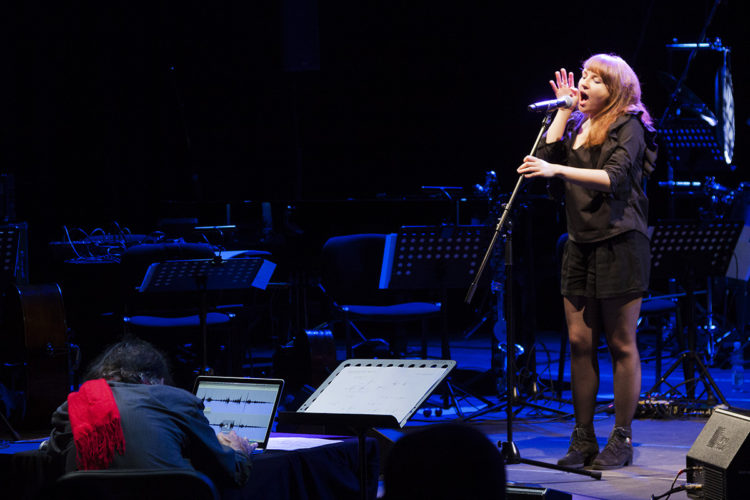
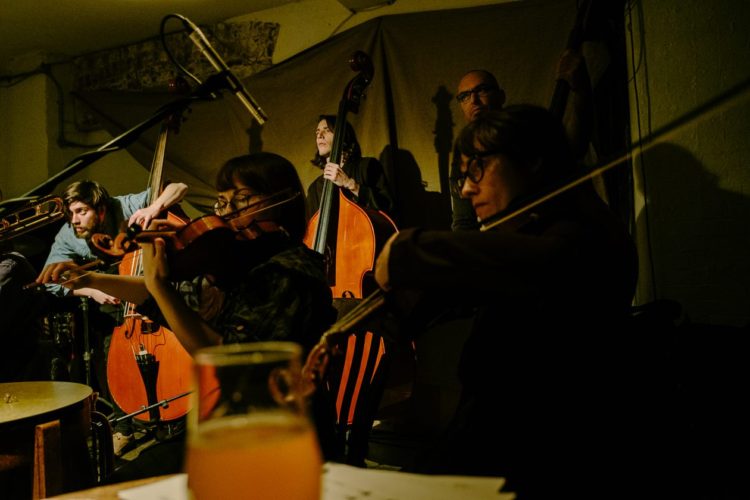
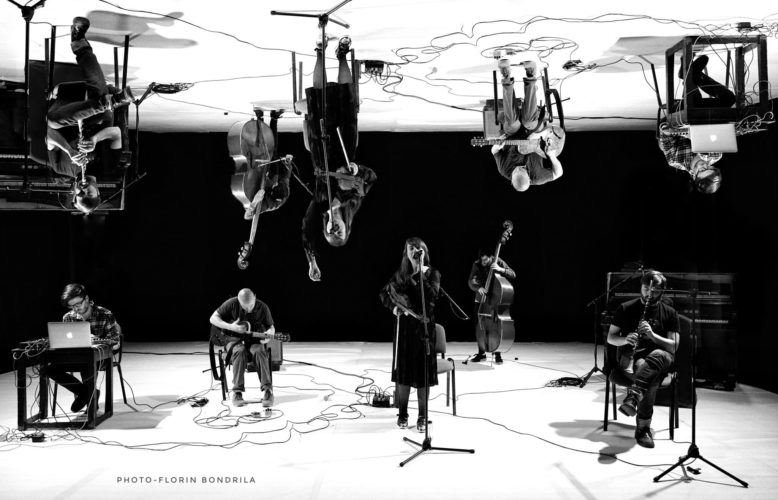
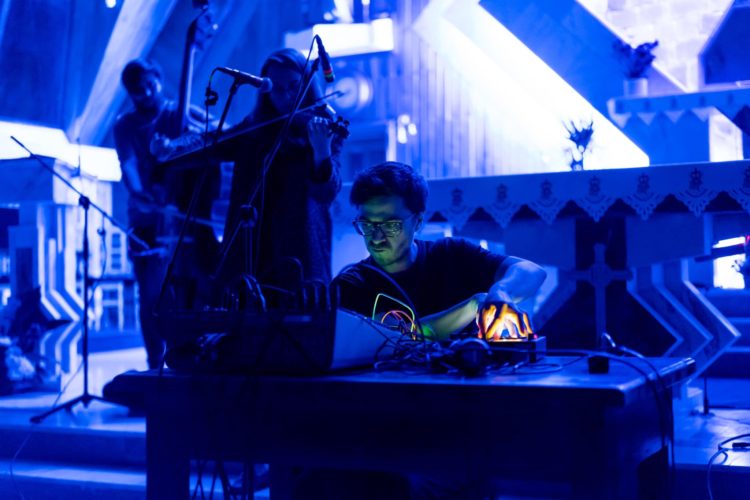
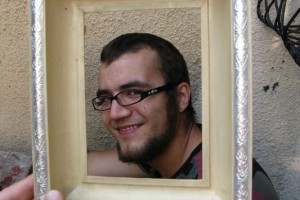
Comments are closed here.